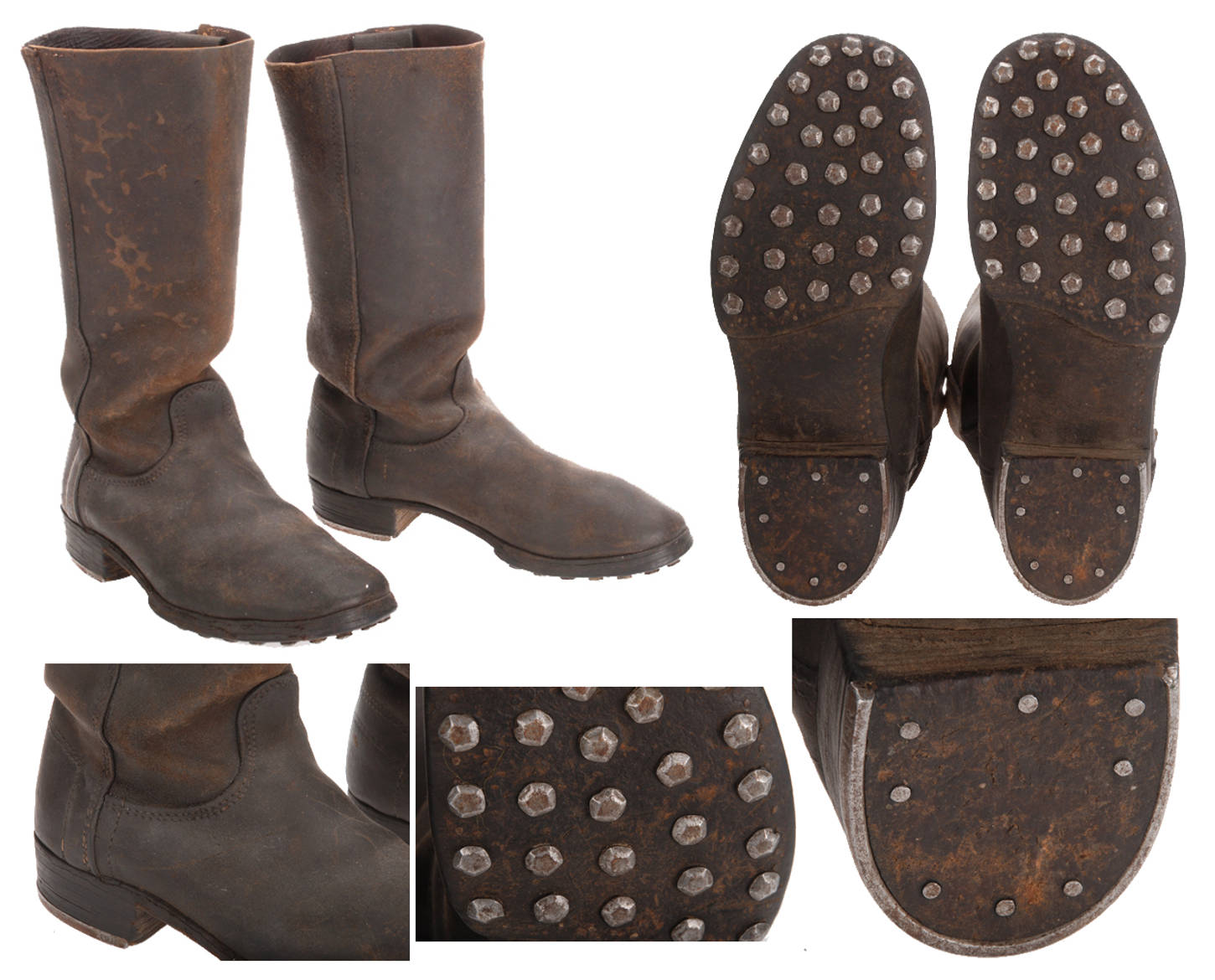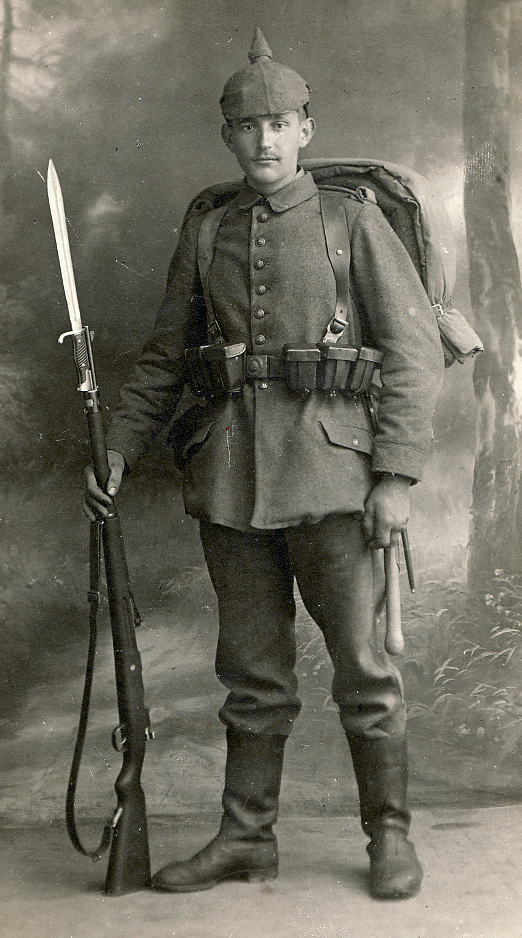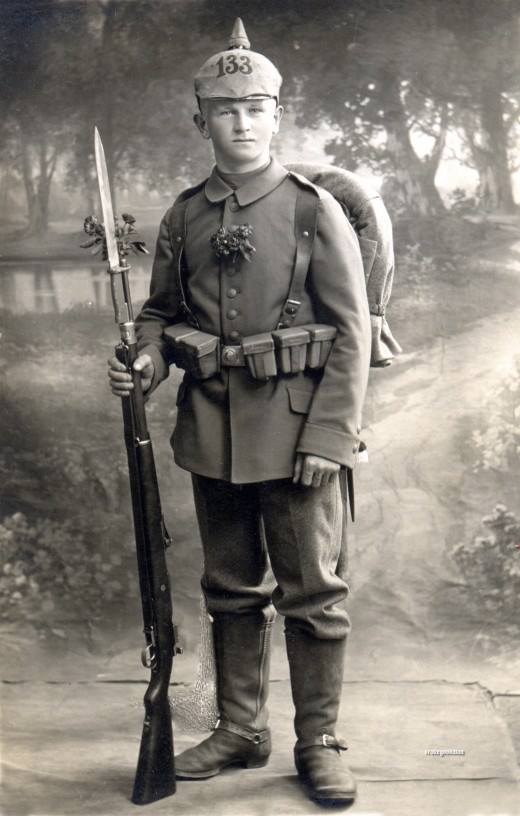Main Menu

Marschstiefel (Marching Boots) M1866
The M1866 Marschstiefel, were also known as Infanteriestiefel , but Frontsoldaten themselves would call them "Knobelbecher" (Dice-shakers). Prior to 1910, Marschstiefel were dyed black, but with the issue of the new field uniform in 1910, boots and other leather gear were issued in the natural brown leather. However, wartime realities caused a return to prescribing that boots and leathers be dyed black in 1915.

Original pair of M.1866 Marschstiefel.
The total height of the infantry boot was between 14" and 16" and the shaft was constructed from two part parts with seams on the sides. Two 4.7" (l2cm) long straps were attached inside the boot on the sides to function as pulls in order to get them on. These straps were made made from Gurt (fabric) or other materials as of 1916 (leather). The sole of the boot contained between 30 and 45 hobnails. The 1.2" (3cm) high heel was reinforced with steel, a bit like a little "horseshoe". Later in the war, leather shortages let to the demand for heels to be manufactured from several layers of wood. Initially only troops in the Heimat were equipped with these economy boots, but later on they also appeared with front line troops. The model 1866 boots were used well into the Reichswehr period.

Original studio photo of a young Soldat wearing a pair
of M.1866 Marschstiefel.
Hobnails and Heel Plates:

One style of heel iron.

Another style of heel iron.

Basic WWII German hobnails.
Marschriemen (Boot tighteners)
As reenactors, and not really used to wearing jackboots, many reenactors utilize a type of strap that encircles the ankle with a auxillary strap that runs under the sole in the arch in front of the heel and it has a buckle adjustment. This strap, Marschriemen, tightens around the ankle and keeps the boot in place.

Original photo of a Soldat wearing M.1866 Marschstiefel with
Marschriemen
Marschriemen are seemingly far more common among reenactors than the real soldiers of the time, but photo evidence does show that they were not uncommon, especially early in the war. However, as the war dragged on, Marschriemen became much less common. We suspect that Marschriemen were private-purchase items, and as wartime resources dwindled, the availability of Marschriemen declined. In addition, due to leather shortages, Schnurshuhe were far more common late in the war and since these did not require Marschriemen, this heavily contributed to the dwindling number of Marschriemen as well.